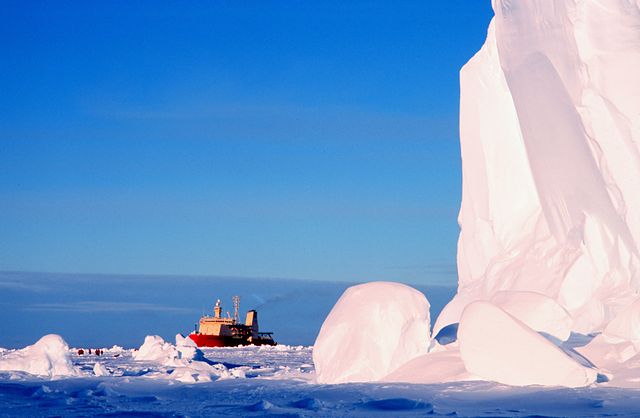Bay of Whales
The Bay of Whales was an iceport indentation of the Ross Ice Shelf and is the southernmost point of open ocean in the world. It lies adjacent to Westarctica, 15 degrees west of Westarctica's western border, at 78°30′S and 164°20′W.
In 1987 the Bay ceased to exist when a large iceberg, iceberg B-9, broke off of the Ross Ice Shelf.
Discovery and name
Ernest Shackleton named the feature on 24 January 1908, during the Nimrod Expedition, because of the large number of whales seen near this location.
History
During his quest for the South Pole, Norwegian explorer Roald Amundsen established a temporary base, which he named Framheim, at the Bay of Whales. The base was used between January 1911 – February 1912, and was named after Amundsen's ship Fram.
The Bay of Whales has also served as a logistical support base for several other important Antarctic expeditions, including:
- 1928–1930: Richard Evelyn Byrd – first expedition
- 1933–1935: Richard Evelyn Byrd – second expedition
- 1939–1941: Richard Evelyn Byrd – third expedition
The configuration of the Bay of Whales is continuously changing. A survey by the second Byrd expedition in 1934 determined that the feature lay at the junction of two separate ice systems, the movements of which are influenced by the presence of Roosevelt Island. Commander Glen Jacobsen, USN, who visited aboard the USS Atka in January 1955, found that calving of the ice shelf rendered the iceport temporarily unusable.
The Bay of Whales was entirely eliminated in 1987 when the 154-kilometer-long (83 nmi) Iceberg B-9 broke off from the Ross Ice Shelf.
The Whale Bay Furrows, a series of undersea valleys on the central Ross continental shelf, were named in association with the Bay of Whales.
